The 10 Best Beaches in Africa for Snorkeling, Surfing, and Remote Relaxation
Editor's Note: Those who choose to travel are strongly encouraged to check local government restrictions, rules, and safety measures related to COVID-19 and take personal comfort levels and health conditions into consideration before departure.
Africa has 38 countries that claim a coastline. That's a whole lot of beach to choose from. There's palm-studded postcard perfection in Mozambique, iconic architectural outposts in Kenya, Ghana, and Tunisia, and grizzly cliffs that sunk many a ship trying to cross the wild South African seas during early colonization expeditions. Madagascar flaunts the longest coastline, while the Democratic Republic of Congo features a mere 40 miles of seaboard. There are smaller ocean islands, too. Several are ringed by soothing shores of soft golden gravel, embroidered by sparkling lagoons and iced with top-tier resorts. With such variety, it seems criminal to choose just 10 beaches.
Whether sanctifying ceremonies, ticking off a bucket-list dive, or simply surfing, sunbathing, and seeking memorable boogies in the glow of a beloved beach bar, there's an enchanting African seashore to do it.
Here are 10 of the best beaches in Africa for every kind of escape.
Mafia Island, Tanzania — Best for Snorkeling and Whale Sharks
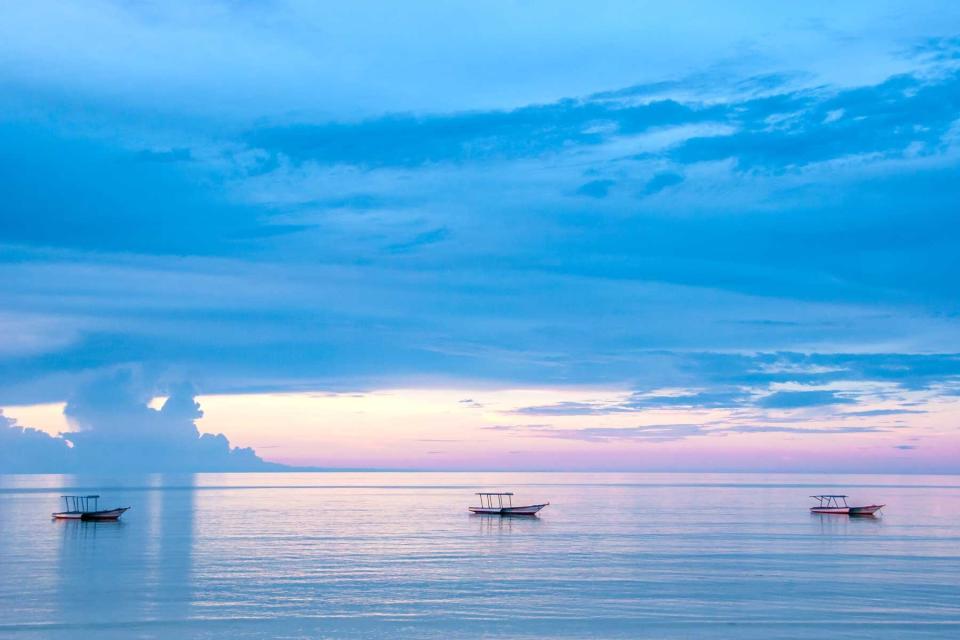
Catherina Unger/Getty Images
Mafia Island is Tanzania's lesser-trodden island address. About 100 miles south of Zanzibar and sublimely serene, the entire atoll contains a fraction of the hotel beds (a mere 300 compared to Zanzibar's 10,000). Here, uncrowded beaches are practically guaranteed. The choicest are Butiama Beach near the charming capital, Kilindoni, or the southern shores of Chole Bay. Both offer cookie-crumb sands and tidal flats that see the waters withdraw and return in lengthy shore changes. Sometimes, swimming requires a good walk, but it's always richly rewarded. The island has a protected preserve safeguarding diverse marine life in vibrant reefs and elaborate trenches ideal for diving. Still, even scuba pros will willingly swap their oxygen tanks for regular old lungs to experience Mafia's tremendous seasonal visitors. Whale sharks are best observed with a simple snorkel and commonly encountered during the Kaskazi season, between October and February, when seasonal winds bring nutritious plankton in abundance for the striking fish to feed on.
Loango National Park, Gabon — Best for Wildlife
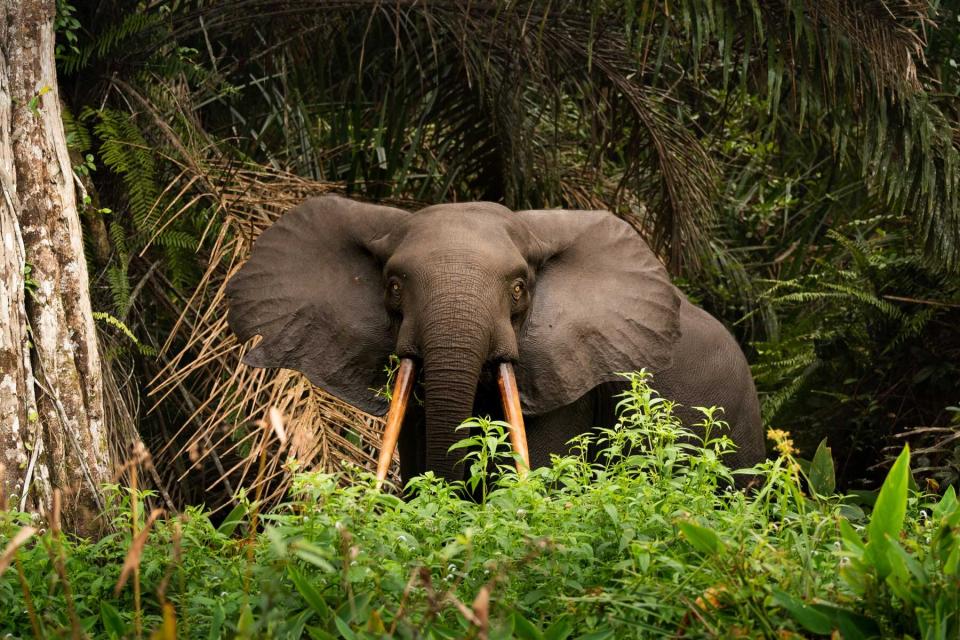
Jwngshar Narzary/EyeEm/Getty Images
This is a beach for the adventurous. With teeming forests, sweeping grasslands, and thriving estuaries, West Africa's Loango National Park not only has the most developed setup for tourists, but surfing hippos enjoy the immaculate beaches, too. Forest elephants and buffaloes also roam the shores, and the area is renowned for its brilliant bird life. Its unique avian species better belong in a Roald Dahl book, with names such as white-crested tiger herons, vermiculated fishing owls, and chocolate-backed kingfishers.
Cabo Ledo, Angola — Best for Surfing
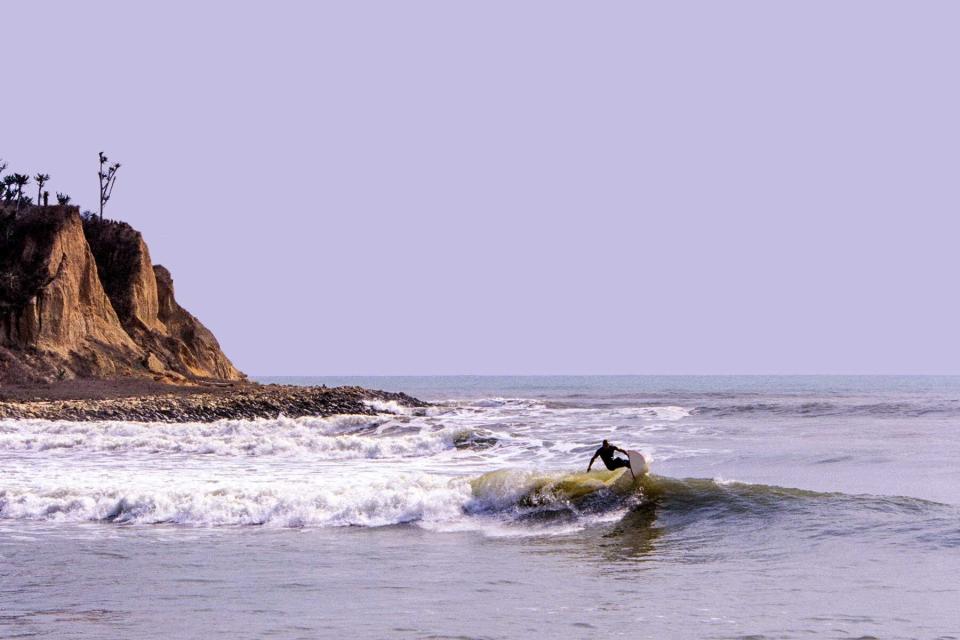
John Seaton Callahan/Getty Images
Sealed off from international travel for decades following the brutal civil war, Angola is slowly becoming more accessible with peaceful politics and relaxed visa systems. Home to 1,025 miles of varying coastline habitats, it's a destination begging for rediscovery, and surfers emerged as the first intrepid guests. The easiest and prettiest beaches to hit are in Cabo Ledo. Located near a traditional fishing village in a broad bay two hours from the capital, Luanda, Cabo Ledo offers ample sandy shores, rolling rides optimized by easygoing beachfront resorts. Experts allege that the winter season between May and October provides the best consistency for great waves.
iSimangaliso Wetland Park, South Africa — Best for Family Swims

Gunter Lenz/Getty Images
iSimangaliso means "place of miracle and wonder" in South Africa's regional language, isiZulu. Deserving of the title, this tranquil, tropical coastline stretches for 136 miles and is one of the most beautiful, abundant, and biodiverse areas in South Africa. Comprising several expansive beaches, the most convenient bathing options sit in the south at Cape Vidal and Sodwana Bay (which is also a scuba diving hub, with the continent's southernmost coral reefs). In contrast, the St. Lucia beaches are popular for day visits and conveniently complement a morning or afternoon spent on safari. However, unspoiled stretches lie further north for enhanced solitude. Black Rock, Bhanga Nek, Mabibi, and Kosi Bay are prime for secluded snorkeling and uninterrupted lounging. Tip: Visit in South Africa's summer season between October and March, and you may be able to track leatherback and loggerhead turtles with registered guides. It's a timeless wonder to see the creatures traveling up a steep beach to lay eggs, or if you're lucky, find hatchlings returning to sea.
Bazaruto Archipelago, Mozambique — Best for Luxurious Submersion

Getty Images
Elevated beachside luxury is easy to find in this aquamarine paradise. Bazaruto is a fertile seascape containing a string of five gorgeous islands off the coast of Vilanculos (where airport access lies). Sharks, whales, rays, turtles, dolphins, and even the rare dugong swim these stunning seas alongside 2,000 fish species. Above water, you'll find a slew of sustainable stays that complement the wild waters. An exciting option among them is Kisawa Sanctuary, pegged as the only resort globally employing 3D printing technology to create natural building material (essentially a mixture of sand and seawater).
Cape Maclear, Lake Malawi — Best for Cheery Resorts

Getty Images
"Sea" may be a stretch, but this enormous inland pool of gin-clear water stretches as far as the eye can see and offers affordable lakeside leisure. Cape Maclear, an effervescent haven on Lake Malawi, is the sort of place where you can stroll straight from your suite onto the beach — or to a bar. Beyond the shores, there's kayaking, swimming, and snorkeling for the lake's vibrant cichlid fish. The immediate area also forms part of the Lake Malawi National Park, the world's first freshwater nature reserve.
Grand Popo, Republic of Benin — Best for Culture

Tim White/Getty Images
The expansive sandy beaches of Grand Popo are amazingly enticing, but sadly not suited for swimming, as the sea is typically rough with dangerous rip currents. Stick to the sand instead and discover a precious pocket of West African culture. Benin is the birthplace of the sacred religion of Vodun (better recognized as Voodoo in the West), and visitors flock to the festival, Fête du Vaudou, held on January 10 each year in nearby Ouidah. However, Grand Popo is also the site of many celebrations. Visit at any other time of year to simply unwind below one of the many straw huts with wooden loungers dotted along the sand.
Margarida, Príncipe — Best For Remote Relaxation

Aldo Pavan/Getty Images
Move over Madagascar. Once known as the Chocolate Islands, the two-island nation of São Tomé and Príncipe is referred to these days as Africa's own Galapagos, thanks to its isolated location some 130 miles off mainland West Africa. Perched on Príncipe, Margarida is a wild beach only reachable by boat or foot. Here, the warm water laps in emerald green waves, and it's easy to spot kingfishers trilling from the trees while wading in.
Bruce Beach, Bijagós Archipelago, Guinea-Bissau — Best for Rustic Vibes
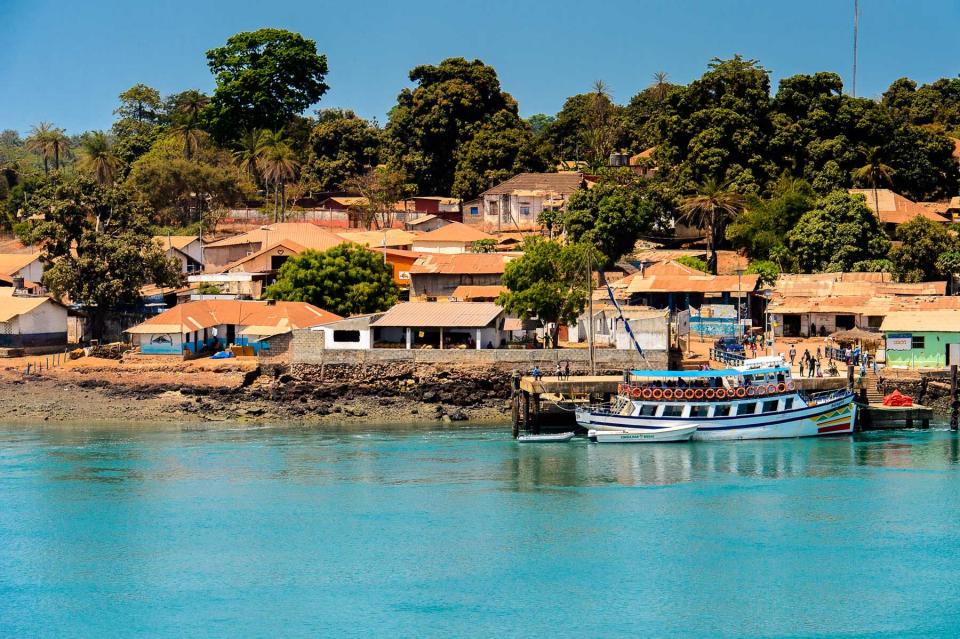
Getty Images
The Bijagós archipelago, a UNESCO Biosphere Reserve located off the coast of Guinea-Bissau, is composed of 88 islands, but permanent inhabitants reside on roughly only 20 of them. The most significant population calls Bubaque Island home. Visitors will land at the old port and cross the entire peninsula (although bumpy, it's just over 10 miles in total) to reach the crisp waters of Bruce beach. Expect rustic beach camps, fantastically fresh ocean-to-plate fish, and everything (including the ferry ride in) to take its sweet time.
Elmina, Ghana — Best for History Buffs
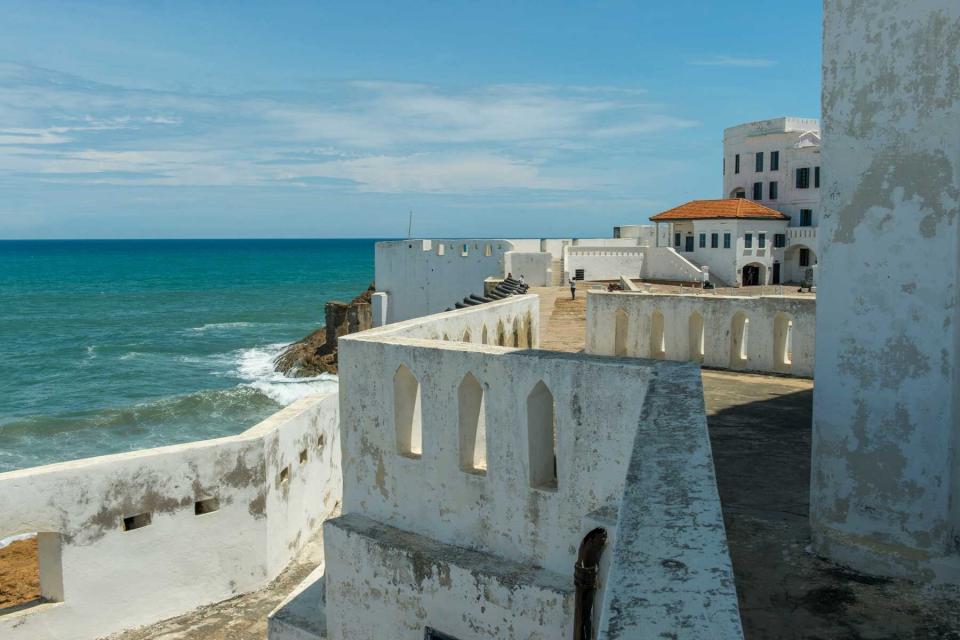
Wolfgang Kaehler/LightRocket via Getty Images
While beach holidays are generally a trivial, leisurely pursuit, many of Africa's shores are profoundly historical sites. Honor the land — and those who left it — with a visit to Elmina beach. Elmina's own St. George's Castle was founded by the Portuguese in 1482, making it the oldest European building in sub-Saharan Africa. Nearby, the Cape Coast Castle Museum acknowledges the grim atrocities and consequences of slavery. In 2019, Ghana hosted a flux of tourists under the Year of Return initiative, and next year, a follow-up project called Beyond the Return is set to begin. After a firsthand confrontation with the castle's inhumane dungeons and a tour of the "Door of No Return," you'll never see the Atlantic Ocean in the same way again.

